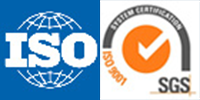News
FeCrAl Alloy Grades and Properties
FeCrAl alloys (Iron-Chromium-Aluminum) are widely used in high-temperature applications due to their excellent oxidation resistance, high electrical resistivity, and mechanical strength. Below are FeCrAl alloys key properties:
- Composition (Typical Range)
- Iron (Fe): Base metal (~70-80%)
- Chromium (Cr): 15-22% (enhances oxidation resistance)
- Aluminum (Al): 4-7% (forms protective Al?O? scale)
- Minor additions: Rare earth elements (e.g., Y, Zr) for improved scale adhesion.
- Key Properties
A. Physical Properties
- Density: ~7.1–7.2 g/cm³ (lighter than NiCr alloys like Nichrome)
- Melting Point: ~1500°C (2732°F)
- Electrical Resistivity: 1.3–1.5 ??·m (higher than Nichrome, making it energy-efficient for heating)
- Thermal Conductivity: Low (~11–15 W/m·K)
- Thermal Expansion Coefficient: ~12–14 × 10?? /K (similar to stainless steel)
B. Mechanical Properties
- Tensile Strength: 500–800 MPa (varies with temperature)
- Elongation at Break: ~15–25% (ductile at room temperature)
- Creep Resistance: Good up to ~1300°C (but weakens near melting point)
C. High-Temperature Performance
- Max Operating Temperature: 1200–1400°C (depends on grade)
- Oxidation Resistance: Forms a protective alumina (Al?O?) layer, superior to Cr?O? in Nichrome.
- Sulfur & Carbon Resistance: Better than Ni-based alloys in corrosive environments.
D. Electrical & Heating Properties
- High Resistivity: Allows for compact, energy-efficient heating elements.
- Low Temperature Coefficient of Resistance (TCR): Resistance stays stable with temperature changes.
- Long Lifespan: Slow oxidation rate extends durability.
- FeCrAl alloy Advantages vs. Nichrome (NiCr) Alloys
|
Property |
FeCrAl |
Nichrome (NiCr) |
|
Max Temperature |
Up to 1400°C |
Up to 1200°C |
|
Oxidation Resistance |
Better (Al?O? layer) |
Good (Cr?O? layer) |
|
Cost |
Cheaper (no nickel) |
More expensive |
|
Density |
Lower (~7.1 g/cm³) |
Higher (~8.4 g/cm³) |
|
Resistivity |
Higher (1.3–1.5 ??·m) |
Lower (~1.1 ??·m) |
- Disadvantages
- Brittleness at High Temp: Becomes fragile after prolonged heating (can crack if bent).
- Poor Sulfidization Resistance: Not ideal for sulfur-rich environments.
- Lower Strength at Very High T: Weakens near melting point vs. some Ni-based superalloys.
- Common Applications
- Electric Heating Elements (furnaces, kilns, toasters, vaping coils)
- Industrial Thermocouple Sheaths
- Automotive Sensors & Glow Plugs
- Nuclear Reactor Components (due to low neutron absorption)
- Popular FeCrAl Grades and Comparison
|
Grade |
Composition |
Max Temp (°C) |
Key Features |
Cost |
|
Fe-23Cr-5Al |
1300°C |
Balanced performance |
Low |
|
|
Fe-25Cr-5Al |
1350°C |
Best corrosion resistance |
Low |
|
|
Fe-21Cr-6Al-Nb |
1400°C |
Chinese standard (Nb stabilized) |
Moderate |
|
|
Fe-22Cr-5.8Al |
1400°C |
Standard industrial grade, High oxidation resistance, stable resistivity |
Moderate |
|
|
Fe-21Cr-5Al-0.02Ce |
1425°C |
Enhanced creep resistance, long lifespan |
Moderate |
|
|
Fe-20Cr-5Al |
1300 |
Lower cost, good ductility |
High |
|
|
Fe-22Cr-5Al |
1400 |
High oxidation resistance, stable resistivity |
High |
|
|
Fe-21Cr-5Al (Y, Zr) |
1425 |
Superior creep resistance, long lifespan |
Very high |
Conclusion
FeCrAl alloys are cost-effective, high-performance materials for heating applications, offering superior temperature resistance and longevity compared to Nichrome. However, they are less ductile after thermal cycling.


